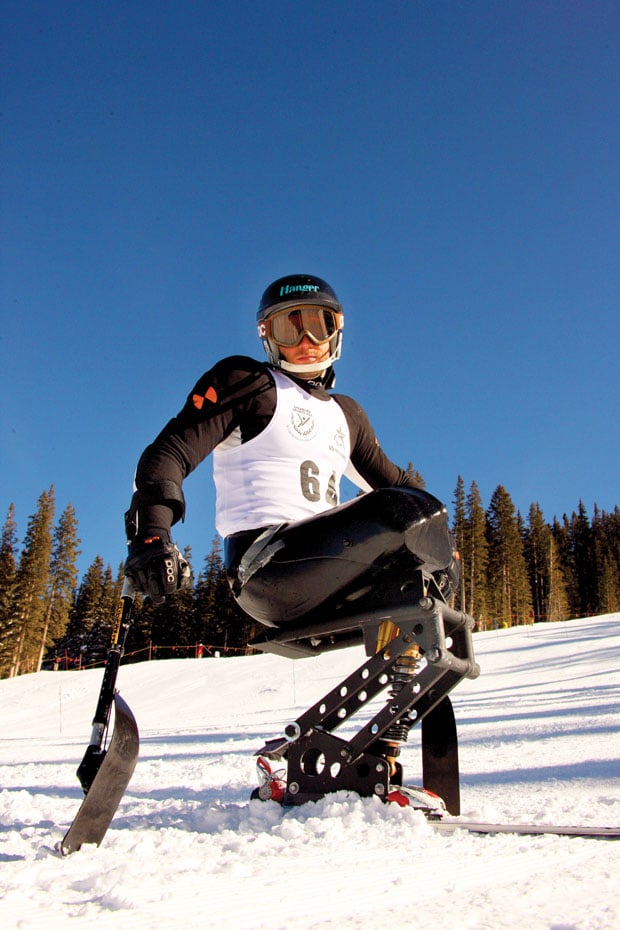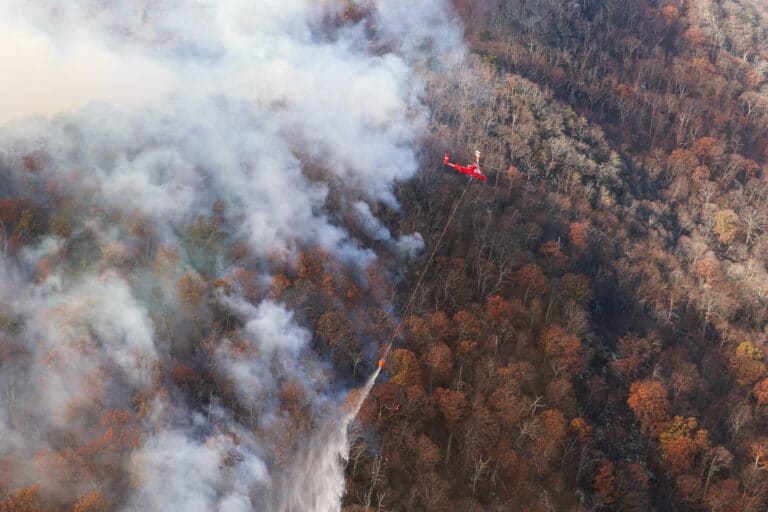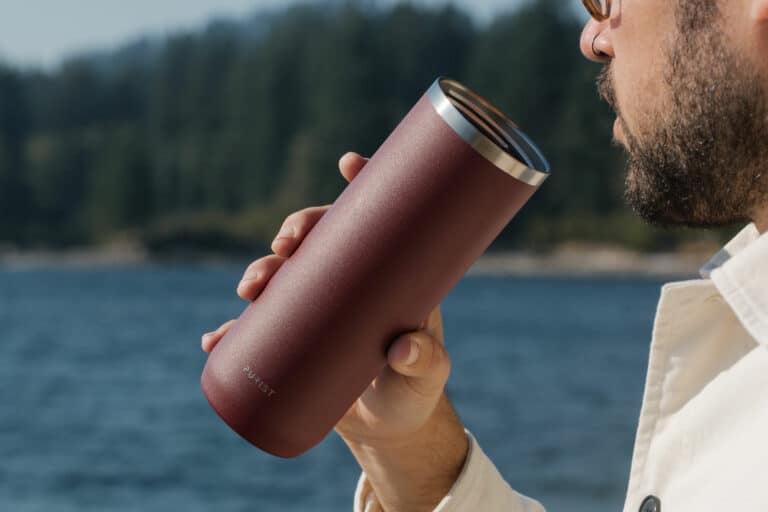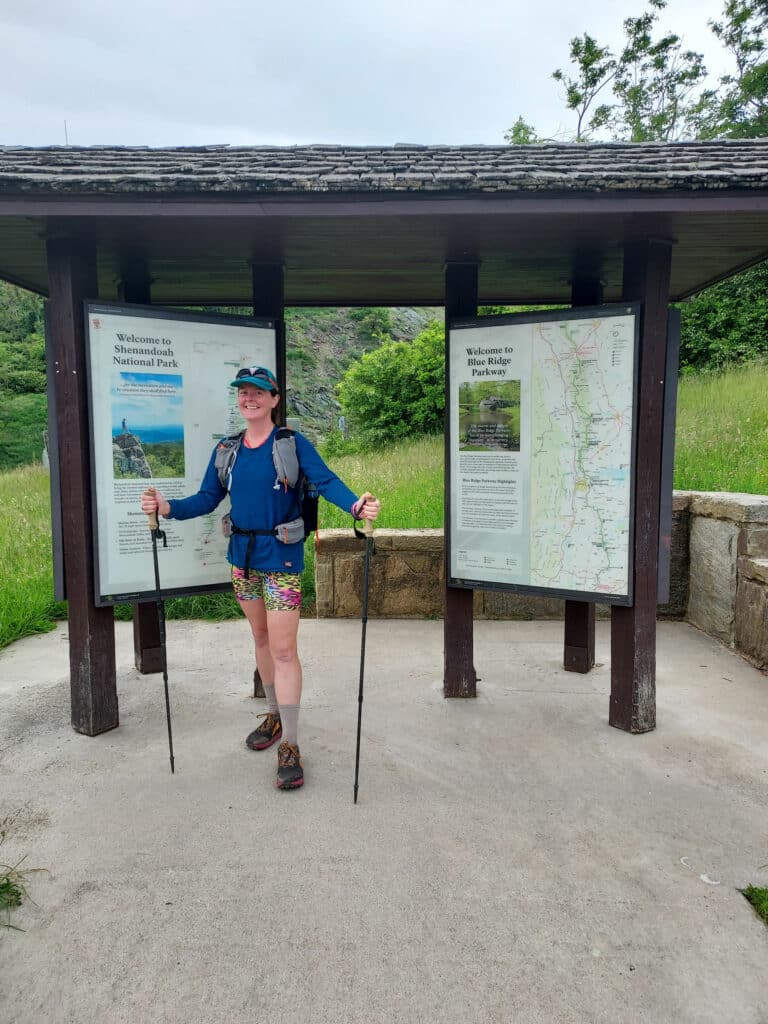Fast Ascent: After losing his legs in Iraq, Calhoun rehabilitated himself on the slopes. he’s now a member of the U.S. Alpine Ski Team.
The journey of Heath Calhoun started simply in the mountains of Southwest Virginia. After growing up in the small coalfields town of Grundy, Va., Calhoun decided to follow a family path and enlist in the U.S. Army. His life changed forever, though, in 2003, when he was serving in Iraq and a rocket-propelled grenade struck his convoy’s truck. His injuries were so severe that both of his legs had to be amputated.
Upon returning home for intensive rehabilitation, Calhoun immediately found solace in sports. In 2005 he hand-cycled 4,200 miles across the country to raise funds and awareness for the Wounded Warrior Project. He also excelled on the slopes. After taking part in a ski clinic in Colorado, it was apparent that Calhoun had a knack for adaptive mono-skiing, so apparent that coaches encouraged him to train seriously for competitive racing. In 2009, he placed first in the super G category of the U.S. Adaptive Alpine National Championships, and the next year Calhoun earned a spot on the U.S. Alpine Skiing Team at the 2010 Winter Paralympics in Vancouver.
Now, in a remarkable twist of fate, this native of small town Appalachia has become a full-time professional ski racer, traveling around the world with the U.S. team for training and competition. While it’s not easy for this father of three to be away from his current home in Tennessee, he’s focused on chasing a dream that will hopefully lead to a gold medal at the 2014 Winter Games in Sochi, Russia.
“Soon after I was hit in 2003 and came back home from Iraq, I was taken to Colorado as part of my rehabilitation. One of the first things I did was try skiing, and I picked it up quickly. It was a freeing experience for me. At first, being in a wheelchair without limbs, I was having a really difficult time getting around. As soon as I was strapped into the mono-ski and got onto the mountain, I could go anywhere anyone else could go. Whether it was the actual runs or the chairlift, I no longer had to look for the handicap accessible lane. Being on a level playing field was something that I hadn’t experienced since losing my legs. From that point on, it’s all I wanted to do.
A defining moment for me was carrying the United States flag at the 2010 Paralympics. I felt a tremendous amount of respect to once again be able to carry the nation’s flag, and the feeling was heightened knowing that the rest of the U.S. team voted to have me carry it. It brought me back full circle.
A typical day for me now involves waking up and hitting the slopes for three to four hours of skiing. Then I grab some lunch, and head to the gym for the rest of the day. That’s my schedule at least five days a week.
It’s amazing to be racing on a world level. Before getting hit in Iraq, I had only skied a few times in my life. I constantly think about how amazing it is that I am now on the world stage in this sport. It still feels odd being a Southern skier. Most of the other guys on the team grew up skiing out West, so I’ve had to learn every aspect of the sport in a short amount of time.
I currently call Clarksville, Tenn., home, but I travel all over the world, learning about it in a way that would have never been previously possible.
I don’t get to see my kids as much as I want, and as much as they want. I make sure the time that I have with them is quality. But I believe pursuing professional skiing is important because it sets an example for them. They’ve watched me overcome something traumatic and turn it into something positive. They were with me in Vancouver in 2010, and they’re planning to go to Sochi. It’s not too often in life that you’re able to give your kids this type of experience.
The buzz for me definitely comes from the speed and adrenaline, but I am in this for the long haul. There’s nothing quite like finishing a run, passing through the corral, and turning around in anticipation to check your time and see how you did. That’s an incredible feeling for me. The goal is to keep getting better, and that comes from constant practice. I am competing against people that have been doing this a lot longer than me, so I have to keep working hard. This sport has given me a reason to try again.”








